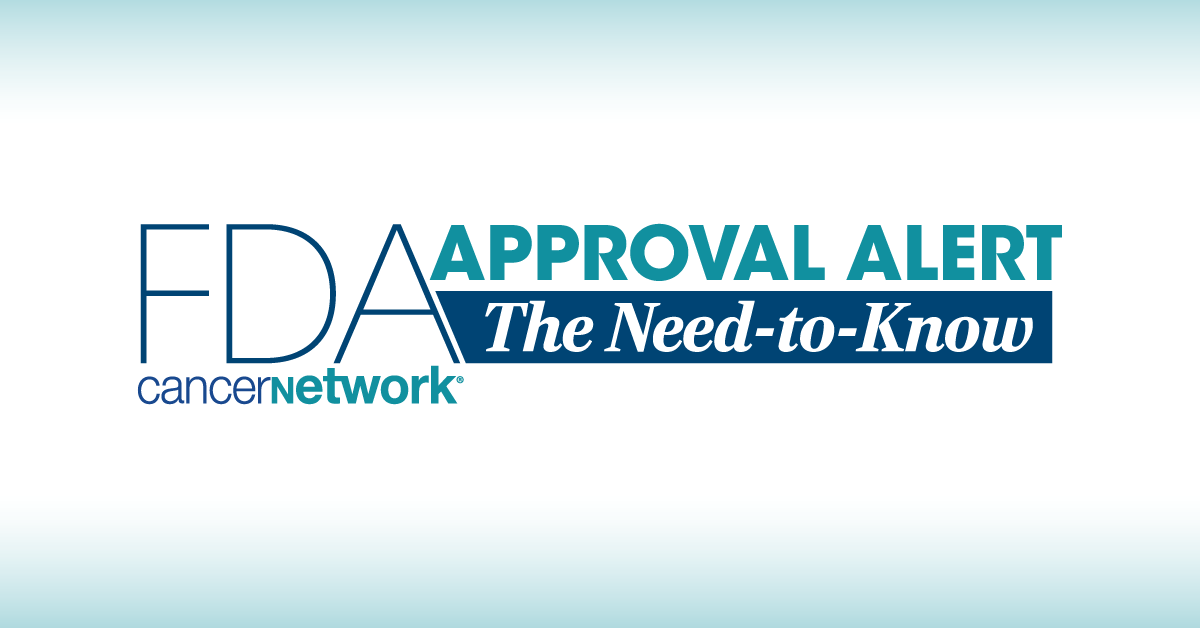FDA OKs Brentuximab Vedotin Combo in R/R Large B-Cell Lymphoma
Data from the ECHELON-3 trial support the approval of the brentuximab vedotin combo in relapsed/refractory B-cell lymphoma.
Findings from the double-blind phase 3 ECHELON-3 trial (NCT04404283) support the FDA's regulatory decision.

The FDA has approved brentuximab vedotin (Adcetris) plus lenalidomide (Revlimid) and rituximab (Rituxan) for patients with relapsed/refractory large B-cell lymphoma (LBCL), according to a news release from the agency.1
Specifically, the indication extends to those with diffuse large B-cell lymphoma (DLBCL) not otherwise specified, DLBCL resulting from indolent lymphoma, or high-grade B-cell lymphoma (HGBL) following at least 2 prior lines of treatment who are ineligible to receive CAR T-cell therapy or autologous hematopoietic stem cell transplantation (auto-HSCT).
Supporting data for the approval came from the double-blind phase 3 ECHELON-3 trial (NCT04404283), in which investigators assessed brentuximab vedotin plus lenalidomide/rituximab vs placebo plus lenalidomide/rituximab among 230 adults with LBCL. Topline data showed a median overall survival (OS) of 13.8 months (95% CI, 10.3-18.8) in the brentuximab vedotin arm vs 8.5 months (95% CI, 5.4-11.7) in the placebo arm (HR, 0.63; 95% CI, 0.45-0.89; P = .0085). Additionally, the median progression-free survival (PFS) was 4.2 months (95% CI, 2.9-7.1) vs 2.6 months (95% CI, 1.4-3.1) in each respective arm (HR, 0.53; 95% CI, 0.38-0.73; P <.0001), and the objective response rate (ORR) was 64.3% (95% CI, 54.7%-73.1%) vs 41.5% (95% CI, 32.5%-51.0%).
Findings from the ECHELON-3 trial were previously published in the Journal of Clinical Oncology.2 Additional data showed a median duration of response (DOR) of 8.3 months (95% CI, 4.2-15.3) in the brentuximab vedotin group and 3.0 months (95% CI, 2.8-5.4) in the placebo group.
Regarding safety, treatment-emergent AEs (TEAEs) of any grade occurred in 97% of patients who received brentuximab vedotin vs 97% of patients in the placebo arm; TEAEs of grade 3 or higher occurred in 88% and 77%, respectively. The most common TEAEs of grade 3 or higher in each arm included neutropenia (43% vs 28%), thrombocytopenia (25% vs 19%), anemia (22% vs 21%), and pneumonia (11% vs 5%).
The trial’s primary end point was OS. Key secondary end points included PFS, ORR, complete response rate, DOR per Lugano classification, and AEs.
The agency approved brentuximab vedotin at a recommended dose of 1.2 mg/kg up to 120 mg in combination with lenalidomide and rituximab every 3 weeks until progressive disease or unacceptable toxicity.
References
- FDA approves brentuximab vedotin with lenalidomide and rituximab for relapsed or refractory large B-cell lymphoma. News release. FDA. February 11, 2025. Accessed February 12, 2025. https://tinyurl.com/4mhcnndc
- Bartlett NL, Hahn U, Kim W-S, et al. Brentuximab vedotin combination for relapsed diffuse large B-cell lymphoma. J Clin Oncol. Published online January 7, 2025. doi:10.1200/JCO-24-02242
Newsletter
Stay up to date on recent advances in the multidisciplinary approach to cancer.
Highlighting Insights From the Marginal Zone Lymphoma Workshop
Clinicians outline the significance of the MZL Workshop, where a gathering of international experts in the field discussed updates in the disease state.